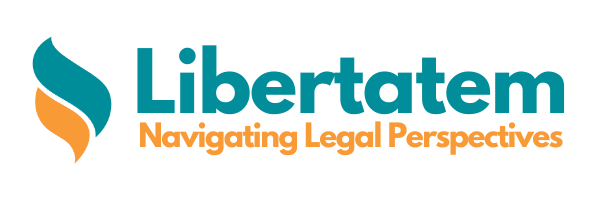Introduction
India’s reaction to the COVID-19 pandemic has shifted the balance of its federal structure. The pandemic has allowed the central government to actualize reforms in areas, traditionally viewed as the domain of states, which is indicates its readiness to utilize the levers of federal power to execute critical reforms and that the constitutional structure of India’s federalism is less pertinent to the real connection between the central and state governments.
The initial phase of the response to COVID-19 threw light on the unitary tilt in the Indian federal structure. The central government executed a national lockdown utilizing its powers under a central disaster management enactment which enables the central government to commandeer state and local authorities if required. State governments assented even though they have autonomous powers under a more specific law, the Epidemic Diseases Act, 1897.
The state governments requested the central government to proceed with its administration of the lockdown during its initial phase. In doing so, states surrendered extensive decision-making power and political money to the central government. Consequent phases of the lockdown have seen their autonomy restored, but Indian states now have less functional power compared to the union.
Since the national lockdown necessitated shutting down nearly all economic activity, there was a massive reduction in revenue for state governments and has further increased their financial dependence on the center.
In May 2020, India’s finance minister declared many reforms to regulate India’s post-lockdown economic recovery, many of which interfere with the independence of state governments and have only been accepted because of the unprecedented situation that is the pandemic.
Article 256 and Article 356
The power of the Union to issue binding directions to States is fundamentally sourced from Article 256, the prerequisites for its applicability being, the existence of central law material to the State, the directive mandated by the Union must be relevant to a matter covered under central law and it should be issued to ensure compliance with the central law.
Under our constitutional scheme, the States are bound to implement directions from the Union government. The Calcutta High Court in Jay Engineering Works Ltd. And vs State Of West Bengal And Ors. AIR (1968) Cal 407, had opined that if the command of the Constitution in Article 256 is violated by the Council of Ministers by issuing instructions contrary to the mandate, then it must be held that the Council of Ministers had no authority to issue those directives.
Under the Constitution, refusal to follow a Union directive can lead to the invocation of Article 365, allowing the President to enforce them by declaring the President’s rule. In S.R. Bommai v. UOI (1994) 3 SCC 1, held that non-compliance with a Union Directive may lead to the imposition of Presidential Rule provided directions given by the Union executive are lawful and the disobedience of the state gives rise to a situation material to Article 356(1).
The question to be addressed is whether the states have an option to express dissent if the guidelines largely encroach upon the exclusive legislative domain of the States under List II of Schedule VII.
Analysis of Possible Encroachment
Regarding the federal division of power, Indian Constitution outlines that the Union and states work in their exclusive legislative areas, and any intervention from the central government is prohibited, unless expressly provided in the Constitution. In the context of the applicability of Article 256, the Supreme Court in Sharma Transport vs Government Of A.P.2001 SC 182 had held that the phrase ‘for that purpose’ in Article 256 refers to the precondition of compliance with the laws made by Parliament and that Entry 56 of List II of the VII Schedule deals with passengers on which the Union has no power to levy taxes. In this manner, the Supreme Court explained that the power under Article 256 can only be exercised for issues falling within the legislative mandate of the Union.
The relevant entries of Schedule VII that had a role to play during the lockdown were:
- Inter-State migration and quarantine under Entry 81 of Union List.
- Public Order under Entry 1, Police under Entry 2, and Public health; sanitation; hospitals and dispensaries under Entry 6 of State List.
- Employment under Entry 23 of Concurrent List.
It was settled in Waverly Jute Mills Co. Ltd vs Raymon & Company (India) Pvt. Ltd AIR 1962 SC 407 that the subject matter of a ‘general entry’ must be interpreted to exclude that of the ‘specific entry’ and in this way, the former cannot subsume the latter. The MHA lockdown guidelines tended to every small aspect of the provincial administration, such as a cut-off for the assemblage for funerals, or the prohibition on all gatherings for entertainment purposes, without any exemption. These may not have been matters requiring interference from the central government as they seem to be transgressing into matters which are under the State List.
In Jayant Verma vs Union Of India AIR 2018 SC 134, The court held that the argument that Section 21A is made by Parliament at the national level should prevail over State legislation would fall foul of the constitutional scheme, if all the entries of List II would then be subject to Parliamentary law, that is of national importance. Therefore, the national nature of COVID-19 may not be an adequate constitutional justification for the Centre to assume centrality. The States should have the option to adjust certain Union directives if the significant matters exclusively fall under the State List.
Conclusion
The constituent assembly in India examined different federal models in the world and defined a framework suited to India’s needs. Further, it is contended that a strong center does not necessarily assume weak states. Accordingly, India adopted cooperative federalism, defined by administrative cooperation between the center and states. Therefore, both unions and states should cooperate to tackle the Covid-19 pandemic and fortify the spirit of cooperative federalism.

